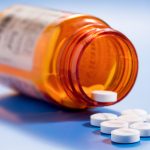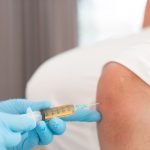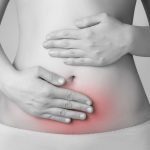Insulin Resistance: Disease or Superpower?
There lies a chasm between conventional medical treatment of prediabetes and type 2 diabetes and the empowered language of ancestral health. The conventional medical definition of type 2 diabetes and prediabetes is high blood sugar; it follows that treatment should lower blood sugar. A different paradigm challenges the practitioner and patient to recognize and act upon the expression of a perfect metabolism that is simply in the wrong environment. Whether the patient is given a diabetes code (250.02) or a functional code of metabolic syndrome (277.7), this western paradigm belittles the strength and survival superpower that drives insulin resistance (IR). IR is not something you “have”; rather, it is an orderly and beneficent trait with which you must live in accordance.
In this case, paradigms are not simply different ways of seeing the truth; they are 2 different truths, with unequal clinical endpoints. Let us first explore the conventional medical paradigm of high blood sugar and subsequent hypoglycemic therapy.
Diagnosis of Hyperglycemia
High blood sugar defines prediabetes and type 2 diabetes. Accordingly, diagnostic procedures consist of measuring blood glucose (Table 1).
Table 1. Fasting Glucose and Hemoglobin A1C
| Glucose, fasting (FBG): Pre-meal & Pre-exercise Baseline (International Units, or SI) |
|
| Hemoglobin A1C (HgbA1c, or HbA1c): A calculated percentage of glycosylated hemoglobin |
|
Glucose is naturally a little higher in the morning due to the human “dawn phenomenon,” thought to be due to less insulin and more glucagon being produced at this time; it may be a means of sustaining physically demanding activity to acquire the first calories of the day. High blood glucose, or hyperglycemia, merely implies but does not define insulin resistance. Hence, there are non-insulin-resistant reasons for high fasting blood glucose (FBG). In these instances, the more chronic metric of HgbA1c will not agree with the elevated morning FBG. Possible causes of morning hyperglycemia that are not due to insulin resistance include:
- Inadequate sleep: Morning glucose is higher due to increased chatecholamines1
- Anxiety or panic: Excess adrenaline triggers an exaggerated dawn phenomenon
- A strenuous workout before the blood draw: This can trigger a release of glycogen, which in turn raises blood glucose
HgbA1c should be accompanied by a CBC test, to assure normal hemoglobin. Anemia lowers the accuracy of the HgbA1C test; therefore, any anemia should be corrected prior to confidently relying upon HgbA1c.2
Treatment of Hyperglycemia
Armed with 2 hyperglycemia markers, the treatment is evident. There are 2 dominant pharmaceutical methods to promote hypoglycemic effects:
- Interfere with the natural tissue release of glucose. Metformin is the primary medication within this category, effectively blocking the release of glucose from the liver and muscles.
- Increase insulin. This can be accomplished either directly through injection or inhalation, or indirectly using compounds that stimulate endogenous pancreatic insulin secretion. Sulfonylureas, such as glipizide or glyburide, are a first-line class of drugs that stimulate the release of insulin. However, other medications with cool-sounding acronyms like TZD, DPP-4, and GLP-1, have the same net effect. Insulin’s job is to stash blood glucose within the storage depots of the body, primarily muscle, adipose, and liver.
A new mechanism for reducing blood glucose is on the table now, one that perversely stimulates therapeutic glucosurea. These sodium-glucose transporter 2 (SGLT2) inhibitors are late-stage considerations for type 2 diabetes and are rarely used, in large part due to unforeseen problems and non-target effects.
Biguanides, particularly metformin, remain the first line of treatment.3 Biguanides do not raise insulin. Biguanides have 2 actions, although the exact mechanisms of action are still unclear. One is to cause cells to take up more glucose, and the other is to prevent release of stored forms of glucose from muscle and liver cells. This, in essence, blocks the ability of cells to release stored forms of glucose. Our metabolism runs on a debt-repayment economy; therefore, blocking stored glucose comes at a cost. Metformin interferes with exercise performance, resulting in higher heart rates and greater fatigue under exercise conditions. The researchers offered the unreasonable solution that type 2 diabetics on metformin should simply work out less strenuously.4 Exercise should not be de-emphasized; on the contrary, exercise works as well, if not better, than metformin to control blood sugars,5 and strenuous exercise, in particular, improves underlying insulin resistance better than metformin.6
Sulfonylureas, eg, glipizide and glyburide, are second-line hypoglycemic agents used within the allopathic paradigm. They, like the TZD, DPP-4 medications, increase the pancreatic release of insulin. If a practitioner is to prescribe insulin-stimulating medications, or insulin itself, he or she must believe in the notion that the high blood sugar simply results from inadequate insulin.
High insulin is not a health and wellness goal for anyone. High insulin results in heart disease, cancer, and obesity. Research has demonstrated a strong link between high insulin and heart attack and stroke.7 Insulin induces sodium retention at the kidney, causing excess fluid retention, which then worsens inflammation and raises blood pressure.8 High insulin creates an environment of high triglycerides (TG) and small LDL-particle size, associated with atherosclerosis formation.9 There is a strong link between elevated fasting insulin and breast cancer,10 melanoma,11 and colon cancer risk.12 Insulin and medications that increase the production of insulin remain common medical strategies to lower blood sugar in type 2 diabetics, even though many individuals already have hyperinsulinemia.
Insulinemic Botanicals
The botanical pharmacopeia includes some insulinemic mechanisms that, while less potent in effect, are nonetheless considerable. Herbs that lower blood glucose via insulinemic mechanisms include Gymnema sylvestre (leaf extract),13 Panax quinquefolius (American ginseng)),14,15 Momordica charantia (bitter melon),16 and Trigonella foenum graecum (fenugreek).17,18 Berberine sulphate can also reduce post-prandial glucose readings, but via a different but well-cited mechanism – carbohydrate malabsorption.19 Interestingly, this mechanism is similar to that of vinegar: by blocking the action of enzymes critical for carbohydrate digestion, carbohydrates are malabsorbed, thereby resulting in lower blood glucose following carbohydrate-rich meals.
Insulin Resistance
What if the problem was not high blood sugar? What if the hypothetical basis for hypoglycemic agents was faulty? A simple measurement of serum insulin gives practitioners a better view of insulin resistance. This term describes a brilliant metabolic process, carried by over 50% of the adults in most populations. Human survival historically required the ability to store extra calories and withstand great physical effort. At least 15 of our 23 genes are known to carry traits related to insulin resistance, and at least 33 gene locations have been confirmed to raise susceptibility to insulin resistance and higher blood sugars.20 This is neither disease nor genetic error.
Indicators of Insulin Resistance
Insulin resistance is partially marked by the elevated glucose and HgbA1c; however, diagnosis additionally requires running a fasting serum insulin (Table 2) and fasting lipid panel.
Table 2. Fasting Insulin
| Serum Insulin, fasting: The ranges listed here are quite different than the wide range the lab provides21 |
|
Low insulin: Labs currently cannot detect insulin lower than 2 µIU/mL. If there is no detectable fasting insulin, ie, <2 µIU/mL (<12 pmol/L), and the blood sugar is significantly elevated, ie, HgbA1C is >6.5% (>44 mmol/L), this could indicate type 1 diabetes or adult-onset type 1 diabetes (LADA, or latent autoimmune diabetes in adults) and should be further evaluated. But low-normal insulin is a mark of a healthier and more sensitive metabolism, and one that provides greater access to stored fats for energy. This insulin sensitivity finding is fortuitously associated with longevity.22
High insulin: On a fasting blood test, high insulin indicates an anabolic state – effectively building fat and muscle. High fasting insulin is unlikely in a thin and frail person. Future risk of type 2 diabetes is suggested by a fasting insulin level above 8 µIU/mL (48 pmol/L).23 High triglycerides, fatty liver, and higher body fat are all notable outcomes of untamed high insulin.24 During pregnancy and growth periods during adolescence, insulin levels, in my experience, may be up to 50% higher than adult baseline.
Quantifying Insulin Resistance
HOMA-IR stands for Homeostatic Model Assessment of Insulin Resistance. The meaningful part of the acronym is IR. It reveals the dynamic between fasting blood sugar and pancreatic basal insulin (Table 3). Low HOMA-IR (<1.0) indicates insulin sensitivity; ie, a small amount of the storage hormone is doing the trick to keep blood sugar in balance. High HOMA-IR results from high insulin, high blood glucose, or both. People with high insulin will develop weight gain, high blood pressure, and increased cancer risk long before blood sugar elevates. Lifestyle habits that reduce the HOMA-IR dramatically reduce these disease risks.25 Those with high insulin will have higher TG:HDL ratios.
The HOMA-IR calculation requires the use of US standard units.
Table 3. HOMA-IR
| HOMA-IR: Glucose (mg/dL) x Insulin (µIU/mL) ÷ 405 |
|
Lipid Patterns
As triglycerides go up, less HDL-cholesterol is produced in the liver. The medical journals refer to this condition as diabetic atherogenic dyslipidemia. An intimidating name, but as it implies, when these lipids get out of balance in this manner, atherosclerosis and heart disease follow. Conversely, cardiovascular disease risk decreases with a lifestyle that induces a lower TG:HDL ratio (Figure 4).
Table 4. Triglyceride:HDL Ratio
| TG:HDL Ratio, fasting |
| Optimal: 0.5-1.5 |
| Extra degree of fat storage: 1.5-3.0 |
| Excessive fat storage and statistically high risk of stroke and heart attack: >3.0 |
The TG:HDL ratio, like HOMA-IR, requires the use of US standard measurements: mg/dL.
Did you notice the mention of “lifestyle”? In the infamous ACCORD trial, polypharmacy was used to induce low blood sugars, with the goal of getting people to non-diabetic levels.26 The study was discontinued halfway through, due to a catastrophic number of cardiovascular deaths in those whose sugars were most effectively lowered. Dr Hertzel Gerstein, the lead investigator of the ACCORD trial, explained the incriminating findings as follows: “We believe that some unidentified combination of factors tied to the overall medical strategy is likely at play.”26 The use of multiple medications was never intended to be curative; however, it was harmful beyond expectations. Similarly, there is a resurgence of medications to lower TGs; several are in Phase 3 trials. Furthermore, data on drug therapies to HDL-cholesterol have all failed to elicit significant clinical benefits.27
A More Effective Therapeutic Approach
What are the truly effective lifestyle factors to replace hypoglycemic methods? We hear it as 1 word by now: “dietandexercise.” However, both diet and exercise must be emphasized, strongly and separately.
In truth, insulin resistance is the perfect expression of an efficient, thrifty caloric economy; inappropriate lifestyle habits are the “disease.” Diet and fitness simply need to be in accordance with one’s favored genetic expression of IR.
Diet
Follow the Money. In the film All the Presidents Men, Bob Woodward is informed, during a eerily suspenseful moment, to simply follow the money to root out the truth. The post-prandial glycemic effect of a high-carbohydrate meal can be modestly reduced with alcohol intake, several herbs and medications, vinegar, fiber. But if someone eats the carbohydrate and something is added to reduce the blood sugar, you should ask, “where did the glucose go”? The dietary carbohydrates are the “money” that must be followed – reduce it at the source. Some people do best on a very low-carbohydrate diet; however, the American Diabetes Association considers the lowest ideal carbohydrate intake to be 130 grams per day,28 which is substantially too high for most people with IR. A low-carb, high-fat diet (LCHF), containing less than 50 grams of carbohydrate per day, consistently outperforms all other diets for both people with type 2 diabetes and precursor states.29
Exercise
Exercise is an independent consideration in the correction of insulin resistance. Once again, the American Diabetes Association archaically recommends 150 minutes of weekly aerobic exercise. While this burns calories above what would be utilized at rest, it does not reverse the expression of insulin resistance. High-Intensity Interval Training (HIIT) better improves markers of IR, even in the short term,30 and long-term benefit of Moderate to Vigorous Physical Activity (MVPA) are inarguable. Very brief exercise does not burn many calories, but we must realize and encourage resistant patients that short bursts – of as little as 4 minutes if strenuous enough – can improve fitness and substantially improve metabolism.31
Four clinically relevant fitness principles can be applied to people with IR:
- Exercise on an empty stomach
- Exercise strenuously and vigorously
- Engage many muscle groups whenever possible
- Vary the heart rate throughout the exercise period
Nutrient Considerations
Our approach to nutrient considerations – at the forefront of addressing insulin resistance in a patient – should be supportive rather than a this-for-that reductionism. Some nutrients are low secondarily to the expression of IR, and the deficiency can subsequently complicate metabolic correction; vitamin D and magnesium are notable examples. But dosages are best geared toward modest support and should be adjusted for each individual, not for the ICD code. A detailed discussion of nutrients that support insulin metabolism will follow in a future article.
Frame the Narrative
My insulin resistant clients – whether weight gain, heart disease risk, or high blood sugar drove them in – do not walk out of my office with the disease shame with which they arrived. Rather, they learn that their condition is simply due to a discord between their current efficient lifestyle and their genetic perfection that favored an inefficient environment. The very trait of high insulin and insulin resistance is in perfect harmony for a life lived with carbohydrate restriction and a physically demanding world.
Words are important. Do we treat type 2 diabetes with diet and exercise, or is the diabetes in remission? Or, better yet, do these individuals no longer have diabetes as long as they eat and exercise in accordance with their inner super powers? The metabolic tendency toward insulin resistance is lifelong – patients don’t need a short-term fix. The language of strength and perfection is not merely a ruse, but rather an effective way to frame the life changes that allow us to live the healthy life we were meant to live.
 Richard Maurer, ND, is a licensed naturopathic physician, author, and expert in metabolic recovery. In his Portland, Maine, practice, he has helped people since 1994 to fully recover from weight problems, hypothyroid symptoms, prediabetic conditions and type 2 diabetes. His personal tendency toward type 2 diabetes motivates him to provide truly effective personalized solutions for metabolic health. His radical approach, whether in practice or in his book, The Blood Code: Unlock the Secrets of Your Metabolism, empowers individuals to express their metabolic strengths throughout long, healthy lives. For more information: www.TheBloodCode.com. Twitter: @drrichardmaurer
Richard Maurer, ND, is a licensed naturopathic physician, author, and expert in metabolic recovery. In his Portland, Maine, practice, he has helped people since 1994 to fully recover from weight problems, hypothyroid symptoms, prediabetic conditions and type 2 diabetes. His personal tendency toward type 2 diabetes motivates him to provide truly effective personalized solutions for metabolic health. His radical approach, whether in practice or in his book, The Blood Code: Unlock the Secrets of Your Metabolism, empowers individuals to express their metabolic strengths throughout long, healthy lives. For more information: www.TheBloodCode.com. Twitter: @drrichardmaurer
References:
- Lou P, Chen P, Zhang L, et al. Interaction of sleep quality and sleep duration on impaired fasting glucose: a population-based cross-sectional survey in China. BMJ Open. 2014;4(3):e004436.
- Sinha N, Mishra TK, Singh T, Gupta N. Effect of iron deficiency anemia on hemoglobin A1c levels. Ann Lab Med. 2012;32(1):17-22.
- Rojas, LB, Gomes MB. Metformin: an old but still the best treatment for type 2 diabetes. Diabetol Metab Syndr.2013;5(1):6.
- Boulé NG, Robert C, Bell GJ, et al. Metformin and exercise in type 2 diabetes: examining treatment modality interactions. Diabetes Care. 2011;34(7):1469-1474.
- Chamberlain J, DeMouy J. Diet and Exercise Dramatically Delay Type 2 Diabetes; Diabetes Medication Metformin Also Effective. August 6, 2001. National Institute of Health Web site. http://www.nih.gov/news/pr/aug2001/niddk-08.htm. Accessed November 15, 2014.
- Orchard TJ, Temprosa M, Goldberg R, et al. The effect of metformin and intensive lifestyle intervention on the metabolic syndrome: the Diabetes Prevention Program randomized trial. Ann Intern Med. 2005 Apr;142(8):611-619.
- Lakka HM, Lakka TA, Tuomilehto J, et al. Hyperinsulinemia and the risk of cardiovascular death and acute coronary and cerebrovascular events in men: The Kuopio Ischaemic Heart Disease Risk Factor Study. Arch Intern Med. 2000;160(8):1160-11
- Rocchini AP, Katch V, Kveselis D, et al. Insulin and renal sodium retention in obese adolescents. Hypertension.1989;14(4):367-3
- Festa A, D’Agostino R Jr, Mykkanen L, et al. LDL particle size in relation to insulin, proinsulin, and insulin sensitivity. The Insulin Resistance Atherosclerosis Study. Diabetes Care. 1999;22(10):1688-1693.
- Gunter MJ, Hoover DR, Yu H, et al. Insulin, insulin-like growth factor-I, and risk of breast cancer in postmenopausal women. J Natl Cancer Inst. 2009;101(1):48-
- Antoniadis AG, Petridou ET, Antonopoulos CN, et al. Insulin resistance in relation to melanoma risk.Melanoma Res. 2011;21(6):541-5
- Giovannucci E. Metabolic syndrome, hyperinsulinemia, and colon cancer: AAm J Clin Nutr. 2007;86(3):s836-s842.
- Baskaran K, Kizar Ahamath B, Radha Shanmugasundaram K, Shanmugasundaram ER. Antidiabetic effect of a leaf extract from Gymnema sylvestre in non-insulin-dependent diabetes mellitus patients. J Ethnopharmacol. 1990;30(3):295-305.
- Vuksan V, Sievenpiper JL, Koo VY, et al. American ginseng (Panax quinquefolius) reduces postprandial glycemia in nondiabetic subjects and subjects with T2DM. Arch Intern Med. 2000;160(7):1009-1013.
- Park EY, Kim HJ, Kim YK, et al. Increase in Insulin Secretion Induced by Panax ginseng Berry Extracts Contributes to the Amelioration of Hyperglycemia in Streptozotocininduced Diabetic Mice. J Ginseng Res. 2012;36(2):153-160.
- Chaturvedi P. Antidiabetic potentials of Momordica charantia: multiple mechanisms behind the effects. J Med Food. 2012;15(2):101-107.
- Puri D, Prabhu KM, Murthy PS. Mechanism of action of a hypoglycemic principle isolated from fenugreek seeds. Indian J Physiol Pharmacol. 2002;46(4):457-462.
- Kassaian N, Azadbakht L, Forghani B, Amini M. Effect of fenugreek seeds on blood glucose and lipid profiles in type 2 diabetic patients. Int J Vitam Nutr Res. 2009;79(1):34-39.
- Pan GY, Wang GJ, Sun JG, et al. Inhibitory action of berberine on glucose absorption.Yao Xue Xue Bao. 2003;38(12):911-91
- Diabetes Mellitus, Noninsulin-dependent; NIDDM. Updated December 3, 2014. OMIM Web site. http://www.omim.org/entry/125853?search=t2dm&highlight=t2dm. Accessed December 15, 2014.
- Maurer R. The Blood Code: Unlock the Secrets of Your Metabolism. Blood Code Press [self-published]; 2014.
- Masternak MM, Panici JA, Bonkowski MS, et al. Insulin sensitivity as a key mediator of growth hormone actions on lJ Gerontol A Biol Sci Med Sci. 2009;64(5):516-521.
- da Silva RC, Miranda WL, Chacra AR, Dib SA. Insulin resistance, beta-cell function, and glucose tolerance in Brazilian adolescents with obesity or risk factors for type 2 diabetes mellitus. J Diabetes Complications. 2007;21(2):84-92.
- Machado M, Cortez-Pinto H. Non-alcoholic fatty liver disease and insulin resistance. Eur J Gastroenterol Hepatol. 2005;17(8);823-826.
- Vogeser M, Konig D, Fret I, et al. Fasting serum insulin and the homeostasis model of insulin resistance (HOMA-IR) in the monitoring of lifestyle interventions in obese persons. Clin Biochem. 2007;40(13-14):964-968.
- National Heart, Lung, and Blood Institute. ACCORD Clinical Trial Publishes Results. June 6, 2008. NHLBI Web site. http://www.nhlbi.nih.gov/news/press-releases/2008/accord-clinical-trial-publishes-results.html. Accessed November 15, 2014.
- Keene D, Price C, Shun-Shin MJ, Francis DP. Effect on cardiovascular risk of high-density lipoprotein targeted treatments niacin, fibrates, and CETP inhibitors: meta-analysis of randomised controlled trials including 117,411 patients. BMJ. 2014;349:g4379.
- American Diabetes Association, Bantle JP, Wylie-Rosset J, et al. Nutrition recommendations and interventions for diabetes: a position statement of the American Diabetes Association. Diabetes Care. 2008;31 Suppl 1:S61-S78.
- Santos FL, Esteves SS, da Costa Pereira A, et al. Systematic review and meta-analysis of clinical trials of the effects of low carbohydrate diets on cardiovascular risk factors. Obes Rev. 2012;13(11):1048-1066.
- Shaban N, Kenno KA, Milne KJ. The effects of a 2 week modified high intensity interval training program on the homeostatic model of insulin resistance (HOMA-IR) in adults with type 2 diabetes. J Sports Med Phys Fitness. 2014;54(2):203-209.
- Tjønna AE, et al. Low- and high-volume of intensive endurance training significantly improves maximal oxygen uptake after 10-weeks of training in healthy men. PLoS One. 2013;8(5):e65382.










